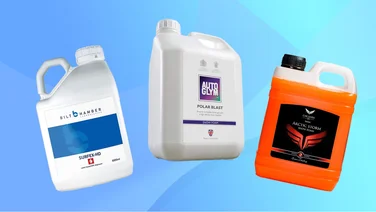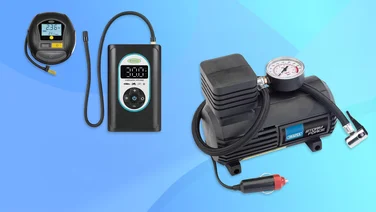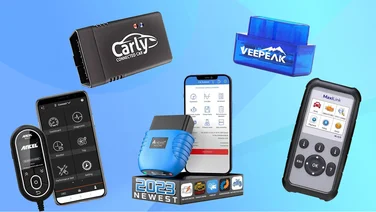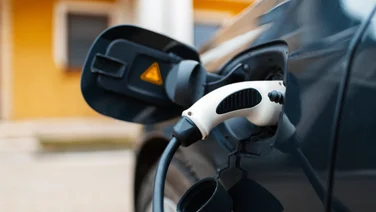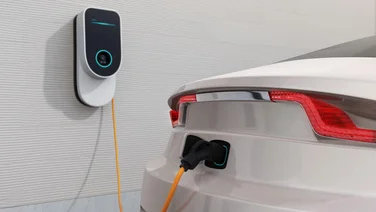To help us provide you with free impartial advice, we may earn a commission if you buy through links on our site. Learn more






- Cheap
- Easy to use
- Allows fault codes to be erased
- No explanation of fault codes on device
- Low-quality build
Modern vehicles are packed with technology that monitors vital signs and can alert the owner to a potential problem. But the issue for the everyday motorist is that warning lights only tend to come on when something has gone wrong. To pre-empt a potential issue, you’ll have to invest in an OBD-II scanner.
OBD-II scanners vary massively in their capability to detect, diagnose and potentially fix any faults that may be thrown up. If the Foxwell NT680 Pro Diagnostic Car Scan Tool is the Porsche 911 of the OBD-II world, the Laser 7728 OBD-II/EOBD Fault Code Reader is very much the Dacia Sandero.
It’s one of the cheaper OBD-II scanners we’ve tested and can only handle basic fault code readouts and the ability to clear off certain warnings. That’s not to say it’s useless – just don’t expect all the bells and whistles.
Laser 7728 OBD-II/EOBD Fault Code Reader review: What do you get for the money?
As previously mentioned, the Laser OBD-II/EOBD Fault Code Reader is very much at the cheaper end of the OBD-II price spectrum, especially if you consider that there’s no requirement to link a smartphone, as with other cut-price devices.It comprises a chunky plastic OBD-II 16-pin Data Link Connector hardwired into a blue plastic reader, itself with a very basic, backlit, monochrome LCD display. There are just two buttons: enter and scroll.
For this reason, the unit is only really geared towards scanning for and reading fault codes; deciphering what they mean is totally up to you. There is a paper manual included in the packaging, which gives a detailed guide on how to use the unit, and also touches on what some of the fault codes refer to.
In essence, however, you’ll either have to resort to the vehicle’s user manual or head to your favourite search engine to get to the bottom of what most of those codes mean.
READ NEXT: Best tyre inflators
Laser 7728 OBD-II/EOBD Fault Code Reader review: What do we like about it?
The Laser 7728 OBD-II/EOBD Fault Code Reader is beyond simple to use, with just one press of a button required to set the unit scanning for fault codes. It comes into its own if you have a warning light illuminated and you’re not sure what it means.






The scanner should be able to kick out a fault code and you can then research this online and work out the best course of action. If you decide the fault is safe to ignore (do this at your own risk), the Laser unit allows for fault codes to be erased from the vehicle system.






In addition, you can use the device to retrieve your vehicle’s I/M Readiness Status, which is able to check the emissions system of a combustion engine. This can be used before an MOT to make sure the vehicle will pass its emissions test.
Finally, there’s a function that can check for the Vehicle Identification Number, which will allow you to make sure it matches with any paper documentation you own.
READ NEXT: Best EV tariff
Laser 7728 OBD-II/EOBD Fault Code Reader review: What could it do better?
If you’re not particularly mechanically minded, the Laser 7728 OBD-II/EOBD Fault Code Reader is only really useful for throwing up a fault code. You’ll then have to do the research into what it means and how to remedy it.
More technically accomplished devices, such as the aforementioned Foxwell NT680 Pro Diagnostic Car Scan Tool or the smartphone-enabled Carly, deliver much deeper information, either via the device (Foxwell) or on an accompanying smartphone app (Carly).






For example, I plugged the Laser into my ageing BMW 3 Series and it came back with a clean bill of health. Having previously tested the Carly, I know for a fact the vehicle is nursing a number of issues that require some fairly immediate attention.
Granted, there aren’t currently any warning lights showing or messages appearing in the iDrive system, but I know that’s likely going to be the case only for a matter of weeks if I don’t get things sorted. With that in mind, the Laser 7728 OBD-II/EOBD Fault Code Reader isn’t very good at preventing future and potentially costly vehicular problems.






The Laser’s build quality is also questionable, with flimsy plastic used throughout, and I can easily imagine simply sitting on it and cracking its plastic case. But then, it is very cheap.
Laser 7728 OBD-II/EOBD Fault Code Reader review: Should you buy it?
If you require some hand-holding through the vehicle diagnostics process, this isn’t the product for you. No further information above and beyond a vague fault code is delivered by the unit.
This makes further research tricky, as some fault codes cover myriad issues and getting to the bottom of, say, a generic powertrain fault code can require some serious sleuth work on a laptop or smartphone.
For simple fixes, and if you need to clear an irritating fault code that keeps surfacing but doesn’t seem to have any negative impact on your vehicle, this will do the job. But for anything more advanced, you’re better off saving up for something more accomplished, such as the Carly.


